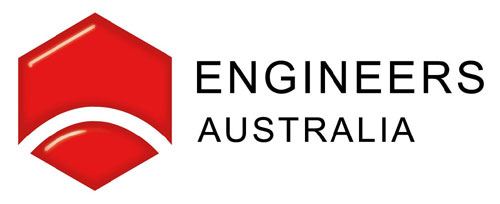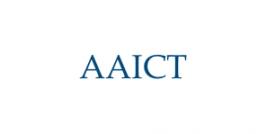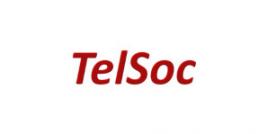KEY DATES
- Late papers accepted - email committee
- Extended paper deadline - 30 September 2022
- Acceptance notification - 15 October 2022
- Final paper deadline - 29 October 2022
- Early bird deadline - 29 October 2022
- Registration deadline - 1 November 2022
- Conference - 30 Nov - 2 Dec 2022
PATRONS

![]()
SUPPORTERS
![]()

Information for authors
Submission Guidelines
Submitted manuscripts should be written in English conforming to the standard IEEE templates available from here. We invite the following two types of submissions:
Full Papers (6 pages complementary, and up to 8 pages with over length charge) and
Short Papers (3 pages complementary and up to 4 pages with over length charge).
All paper submissions must represent original and unpublished work.
Steps
- Papers must be submitted to PDF Express to generate an IEEE compliant PDF for the conference. The PDF Express Conference ID for ITNAC 2021 is 53136X. (https://ieee-pdf-express.org) To learn more about how to use PDF Express go to the bottom of this page.
- Submit your PDF through EDAS here.
Guidelines for Camera Ready Papers
Preparing the final version of your paper, it is important that you address all relevant critical comments of reviewers.
The IEEE templates are the same as for initial submissions.
All camera-ready papers should be in PDF 1.7 format or higher and fonts must be embedded. The final version must be submitted via EDAS. Please log in into EDAS, and click "copyright" in the row with your paper. Complete the copyright form and begin uploading the final version of your paper.
For final manuscripts:
- if you are using Microsoft Word, then use its most current version, as it will help reduce word-to-pdf conversion issues such as embedded fonts, bookmarks, etc.,
- no page numbers and no headers/footers,
- a non-zero PDF top and bottom margins (typically, at least 0.5 inches) to help indicate if there are any page numbers, and
- the final version MUST pass the format check in EDAS.
If you are informed about errors in your PDF file, hints for fixing a given problem can be found here.
Full papers are allocated up to six A4 pages in the IEEE conference proceedings. Short papers are allocated up to three pages. You can submit up to two more A4 pages for full papers or one more page for short papers, but this carries an extra charge of USD100 per page. Full papers exceeding eight pages or short papers exceeding four pages will NOT be accepted by EDAS.
The deadline for the camera-ready submission is 30 October 2021.
As stated on the Registration page, authors of papers accepted for ITNAC 2021 should also remember that:
- Publication of each paper (regardless whether the paper is authored by a student or non-student) has to be secured by at least one full standard conference registration fee paid by its authors.
- The IEEE reserves the right to exclude paper from distribution after the conference (e.g., removal from IEEE Xplore) if the paper is not presented at the conference. Please see the No-Show Policy for details.
The conference publication chair is Dr Khandakar Ahmed (<khandakar.e.ahmed@ieee.org>), and please contact us if you need help.
Preparing your Presentation for ITNAC 2021
Please ensure you nominate the presenter in EDAS and upload your presentation to EDAS prior to the conference.
Sessions have been planned to allow 25 minutes per presentation. 18 - 20 minutes are allocated for the delivery and 5 - 7 minutes for Q & A discussions and changeovers. Please plan your presentation to fit these parameters. PowerPoint or pdf delivery will be acceptable, for normal delivery of a talk we would expect your talk to consist of at most about 15 - 18 slides:
The following is an extract from a series of 4 booklets prepared by the IEEE to guide it's members in preparation of technical presentations, it contains some useful hints:
"An introduction, opening, body and conclusion comprise the four major parts of a successful presentation. The introduction sets up your presentation by identifying the tone of your message, highlighting the importance of the subject matter and establishing your credibility. The opening provides a preview of the presentation by drawing the audience's attention to your presentation, conveying your core message and defining an outline of the upcoming points. The body is the heart of your presentation.
The body defines your main points with appropriate, detail and supporting material. The body may incorporate rhetorical devices while maintaining a focus on simple, clear language to maximize comprehension.
Finally, the conclusion summarizes your core message, recaps your main points and challenges the audience to take action.
With these four components, you can create effective presentations to persuade, inform or share information."
REFERENCE: "Technical Presentations. Book 2 Structure - Anatomy of a Successful Presentation", IEEE USA E-Books.
How to use IEEE PDF Express
Before Creating a PDF
- Proofread your source document thoroughly to confirm that it will require no revision.
Creating your PDF eXpress Account
Log in to the IEEE PDF eXpress site: https://ieee-pdf-express.org
First-time users should do the following:
- Select the New Users - Click Here link.
- Enter the following:
- 53136X for the ITNAC 2021 Conference ID
- your email address
- a password
Continue to enter information as prompted.
An Online confirmation will be displayed and an email confirmation will be sent verifying
your account setup.
Previous users of PDF eXpress need to follow the above steps, but should enter the same password that
was used for previous conferences. Verify that your contact information is valid.
Once inside PDF eXpress you have two options:
- Option 1 (Recommended) You can generate the PDF file from your source files (e.g. MS Word) and the generated PDF file will be IEEE Xplore-compliant. For executing this option, you have to select “Create New Title”, introduce the title of the paper, and then upload the source files. Once the file is converted, download it. This will be the final manuscript file that you will have to upload later on in EDAS.
- Option 2 You can validate a PDF file generated previously with any other tool. If you choose this option, please make sure that all the fonts are embedded, there are no bookmarks and no links (URLs). For executing this option, you have to select “Create New Title”, introduce the title of the paper, and then upload your PDF file. Once the status of the file indicates “PDF Passed PDF check; PDF is IEEE Xplore compatible”, download it from PDF eXpress. This will be the final manuscript file that you will have to upload later on in EDAS (please note that EDAS will not allow you to upload the initial PDF file, but the validated and certified file that you download from PDF eXpress).
Contacting PDF eXpress Support
Access the Publications Support Center for IEEE PDF eXpress.


